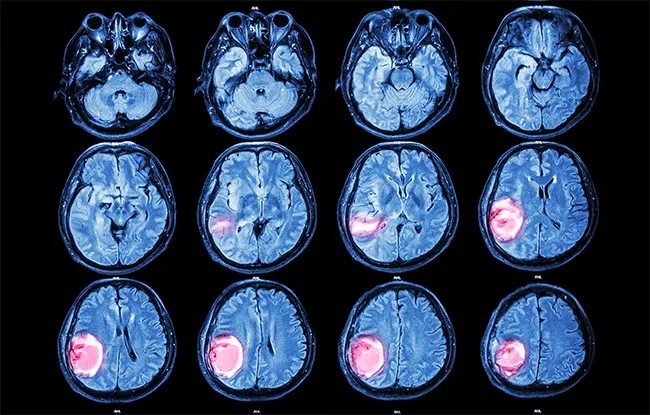- Home >
- Patients and Care >
- Cancer types >
- Central nervous system cancers >
- Treatments for central nervous system cancers
Central nervous system cancers

Treatments for central nervous system cancers
Patients suffering from cancer of the central nervous system are discussed at dedicated multidisciplinary consultation meetings, attended by specialists such as neurosurgeons, medical oncologists, hematologists, radiation oncologists, radiologists, anatomopathologists, pediatricians and others. In the case of rare or complex pathologies, inter-regional, national or even international cooperation is also implemented. The objective? To offer patients the most personalized treatment possible from the outset.
It is based on surgery as the first-line treatment, possibly in combination with chemotherapy, radiotherapy or targeted therapies. It is generally combined with support drugs, such as corticoids to reduce cerebral edema, anti-epileptics and analgesics.
Institut Curie works in partnership with several institutions (Hôpital Foch, GHU Paris- Psychiatrie et Neurosciences - Sainte-Anne, AP-HP), both for neurosurgical interventions and for anatomopathological expertise and neurological follow-up.
Surgery for central nervous system cancers
Because surgery on the nervous system is so delicate, it is meticulously prepared using medical imaging to pinpoint the precise areas to be targeted.
The procedure is generally performed by craniotomy, where the surgeon makes an incision in the skull to gain access to the tumor. Wherever possible, the tumor is removed completely, or partially if there is too great a risk of damaging neighbouring areas of the brain. This "partial removal" reduces the volume of the tumor (and therefore the compression it could exert on the brain), making it easier to treat with radiotherapy or chemotherapy.
Radiotherapy for Central nervous system cancers
Here again, to target the tumor as effectively as possible and avoid damaging other areas of the brain, radiotherapy is carried out with great precision: in fact, a custom-made mask is made to keep the head immobile in the right position during each treatment.
Institut Curie, which boasts the most comprehensive radiotherapy facilities in Europe, uses cutting-edge techniques to treat tumors of the central nervous system:
- intensity-modulated radiotherapy: this treatment is the current standard, enabling the dose delivered to be tailored to the targeted tumor volume, thus limiting damage to surrounding tissue,
- stereotactic radiotherapy: ionizing radiation is delivered in a few sessions at high doses and with great precision,
- proton therapy: instead of using X-rays, this technique uses protons to deliver the maximum dose of radiation to the tumor, while sparing surrounding cells and limiting side effects and after-effects. The technique is used primarily for tumors of the child, the eye and the base of the skull, but also for tumors of adolescents and young adults, and for benign tumors. At its Orsay site in the Essonne region, Institut Curie has one of only three proton therapy centers in France, ranking third worldwide in terms of the number of patients treated.
Chemotherapy for central nervous system cancers
Depending on the type of tumor, its molecular characteristics, its extent and the patient's general condition, chemotherapy may be considered. It is often prescribed for glioblastomas, cerebral lymphomas or medulloblastomas, mainly following surgery.
Targeted therapies for Central nervous system cancers
Some tumors present genetic abnormalities that are likely to respond to targeted therapies. These include gliomas with BRAF gene abnormalities, metastatic lung tumors with EGFR pathway abnormalities, and breast tumors with HER2 protein abnormalities.
Alternating electric fields against glioblastoma
To combat glioblastoma, a non-invasive and painless device has been developed to complement post-operative chemotherapy and radiotherapy: electrodes are placed on the surface of the skull to emit electric fields that disrupt the division of cancer cells. This technique has proven its effectiveness in the progression-free survival in patients with this cancer.

